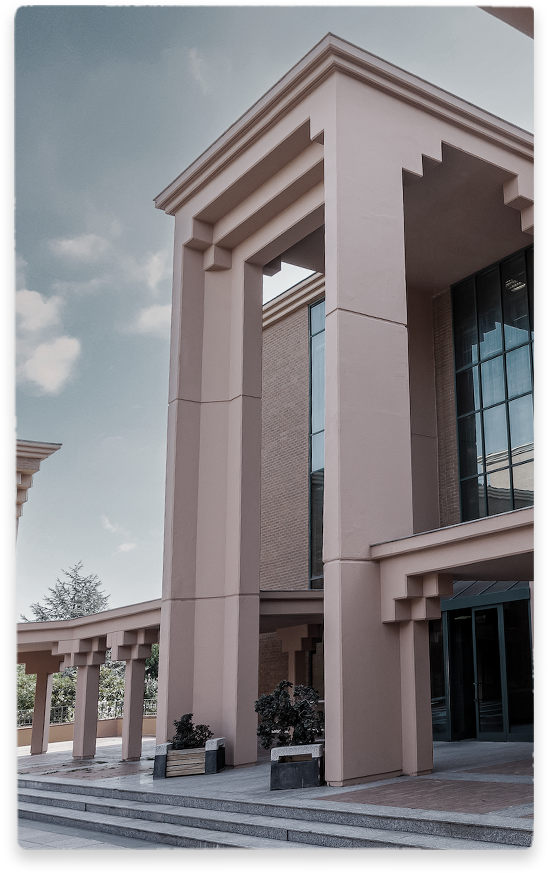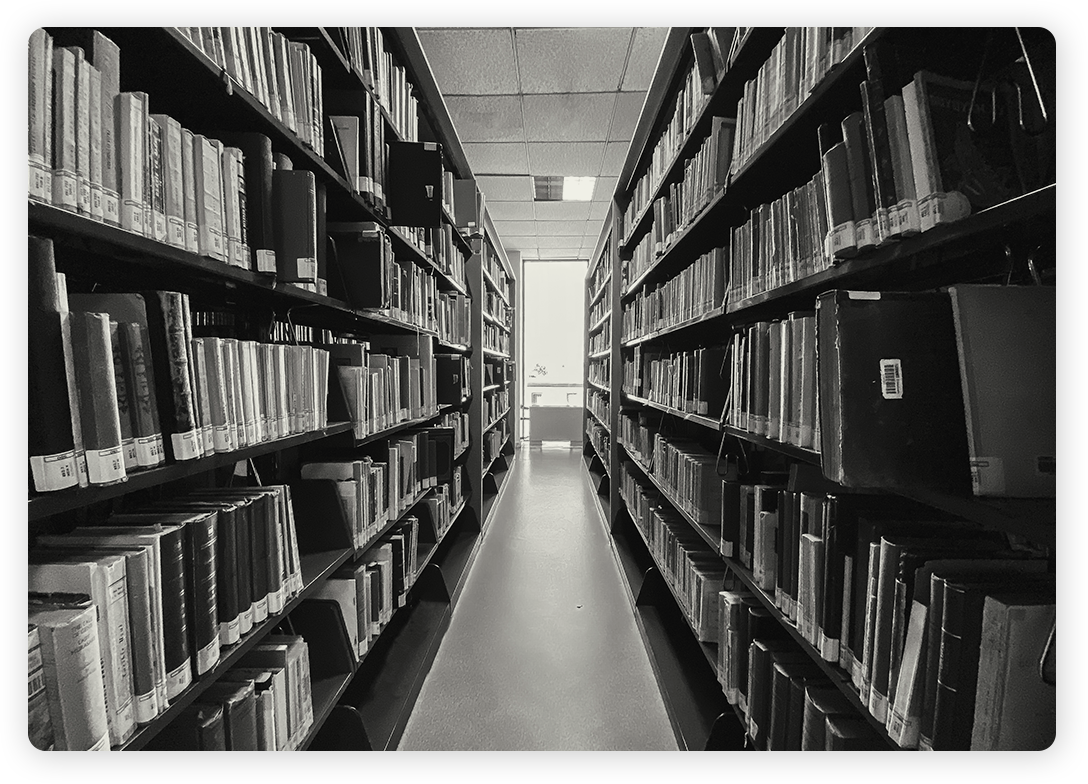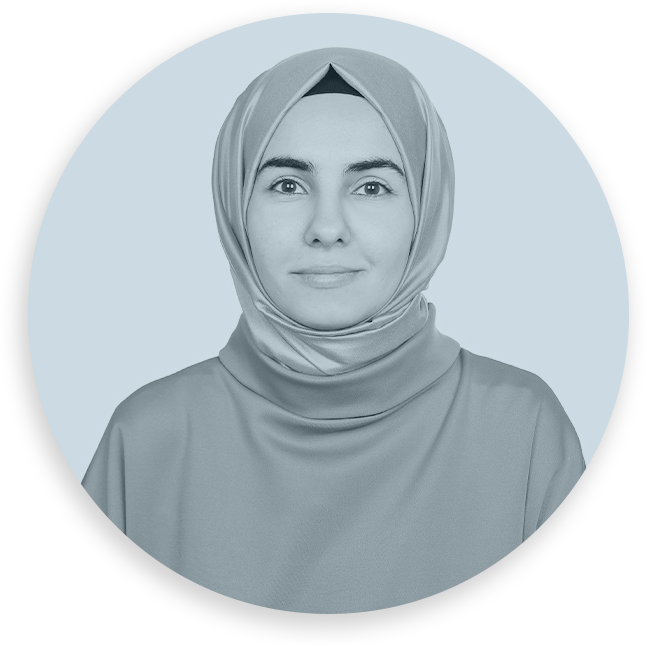Between Academia and Bureaucracy:
A Conversation with Ş. Tufan Buzpınar on ISAM
Arzu Güldöşüren
Between Academia and Bureaucracy:
A Conversation with Ş. Tufan Buzpınar on ISAM
Arzu Güldöşüren

Individuals who leave a mark in the academic world are remembered not only for the works they produce but also for the students they mentor and the institutions they guide. Prof. Dr. Ş. Tufan Buzpınar is one such figure, recognized both for his studies on Ottoman history and for his contributions to academic and bureaucratic institutions in Türkiye.
We had the opportunity to sit down with him and discuss his past and present. His years at the Türkiye Diyanet Foundation Centre for Islamic Studies (ISAM), his academic journey, and the shadow of the February 28 process… When all these are brought together, they form not just the story of one individual but of an entire era. To better understand this story, we must first look at how his academic journey unfolded. Born in Kadirli in 1961, Ş. Tufan Buzpınar completed his high school education in Adana. During his student years at Ankara University’s Faculty of Theology (1979-1984), he first came into contact with the Türkiye Diyanet Foundation (TDV) community, where he would later serve for many years. In December 1984, he was among the first group of researchers sent abroad by the foundation to pursue postgraduate studies in the UK. With this scholarship, he completed his master’s degree in 1986 and his doctorate in 1991 at the University of Manchester’s Middle Eastern Studies Department.
In 1992, he became one of the first researchers at TDV’s Center for Islamic Studies (ISAM), where the idea of a research center, a novel concept for Türkiye, first took root. Alongside various roles within the institution, he became the head of the Researchers’ Committee, responsible for overseeing the work of researchers, following Prof. Dr. Hayrettin Karaman. In March 1999, he was appointed as the head of ISAM, a position he held until August 31, 2001. During this period, he focused on critical issues such as the increasing pressures of the February 28 process, the new payment system for the encyclopedia, and the future of researchers at ISAM, working to establish a healthy balance between the institution and the foundation. He also served as a member of the Türkiye Diyanet Foundation Encyclopedia of Islam’s Turkish History and Civilization’s Academic Board.
In his academic work, Buzpınar focused on the era of Abdulhamid II, becoming an associate professor in 1998 and a full professor in 2005. Between 2010 and 2012, he served as the founding dean of the Faculty of Humanities at Istanbul 29 Mayıs University and as vice-rector. From 2012 to 2015, he was a member of the Higher Education Council’s Executive Board. Between 2015 and 2020, he worked in the History Department at Istanbul Şehir University. He is currently a faculty member at Istanbul Medipol University.
Could you tell us about your journey to becoming a researcher at TDV’s Center for Islamic Studies?
When I was a final-year student at Ankara University’s Faculty of Theology, Türkiye Diyanet Foundation announced a scholarship program for students to study abroad. I applied, passed the exams, and became a scholarship recipient in the summer of 1984. That fall, I took English language courses in Ankara and was sent to the UK in December to continue my academic studies. I stayed in the UK from 1985 to 1991, first completing six months of language training and then my master’s and doctoral studies. After returning to Türkiye and completing my military service, I started working full-time as a researcher at the Center for Islamic Studies in September 1992. At that time, the center was a small unit responsible for researchers like me. Prof. Dr. Hayrettin Karaman and Prof. Dr. İsmail Erünsal were overseeing this unit. The encyclopedia work was being carried out by the General Directorate of the Islamic Encyclopedia. This dual structure continued until 1993. For over a year, I worked as a researcher at the Center for Islamic Studies. While the main principle was to focus on our own research, we also had to support the encyclopedia work. There were tasks like editing and completing entries. At that time, there were very few of us—just two people, if I recall correctly. So, while I continued my own academic research—my doctoral work and other studies—I also contributed to the encyclopedia by writing, editing, and proofreading entries. Back then, the encyclopedia was somewhat localized, with limited international recognition. We had an important agenda: how to strengthen its international presence. This was crucial for two reasons. First, we needed to attract foreign authors because the number of Turkish academics was limited, and there were many entries they couldn’t write. Second, the encyclopedia wasn’t well-known, so people weren’t inclined to contribute. To address this, we decided to publish an English-language fascicle to increase its visibility. This was one of the first tasks I undertook. I worked with an American colleague to select and prepare the texts, and with her linguistic contributions, we created an English fascicle that we distributed at various international conferences. This was an important step in increasing the encyclopedia’s recognition and attracting more foreign contributors.
Could you elaborate on ISAM’s mission to train researchers, of which you were also a part?
In the 1990s, there were dozens of researchers affiliated with the Center for Islamic Studies. They came from different cities, universities, and backgrounds. The goal was to bring them together and, so to speak, make them part of a school of thought. Under the academic guidance of the late Dr. Abdülbaki Keskin, a project developed in the early 1980s envisioned the center becoming a hub for research on Muslims worldwide. Dr. Keskin and the foundation’s leadership at the time, likely in consultation with Dr. Tayyar Altıkulaç, then head of the Directorate of Religious Affairs, believed that Türkiye should study regions with significant Muslim populations and high potential for contributing to world civilization. Researchers sent to Europe would study topics like Muslims in Egypt, the Indian subcontinent, Türkiye-EU relations, Russian and Central Asian Muslims, Türkiye-Arab world relations, and Indonesia. Upon their return, research groups would be formed to study these regions. However, this idea didn’t last long. When the intellectual responsibility shifted from Ankara to Istanbul, the scholars there decided it would be more effective to train researchers based on disciplines rather than regional studies. Since the first group, including myself, was predominantly historians, there was resistance to focusing solely on history. Consequently, they selected researchers specializing in Islamic disciplines like jurisprudence, theology, and exegesis. This led to the establishment of a center in Istanbul, but it also marked a significant intellectual shift. Researchers needed to be guided, matured, and aligned with this new vision. To achieve this, we held regular seminars where all researchers and scholarship recipients would attend. An important speaker would be invited to discuss an academic topic, and the researchers would contribute through questions and discussions. This way, they also became aware of each other’s work, fostering a sense of intellectual community.

Who held the intellectual and administrative responsibility for these researchers?
The primary authority and responsibility lay with Prof. Dr. Hayrettin Karaman. Since he was only present on certain days of the week, I would handle the day-to-day affairs of the researchers and brief him when he arrived. Decisions made under his leadership would then be communicated to the researchers. Prof. Karaman was the intellectual leader of the researchers during his tenure. Later, I became the head of the Researchers’ Committee, but I would always consult with him before making any significant decisions. I managed the daily tasks, prepared documents, and shared ideas with him. This was a challenging and stressful role because training researchers in a research center was an unfamiliar concept in Türkiye. We, as researchers, felt this stress, as did Prof. Karaman, Prof. Ismail Erünsal, and Prof. Tayyar Altıkulaç in their administrative roles. Until my appointment as ISAM’s director in March 1999, I acted as an academic intermediary between the foundation and the researchers, ensuring their work was completed on time. This was a crucial and demanding role, as balancing the researchers’ varying levels of success and different inclinations was no easy task.
How did you transition from being a researcher at ISAM to becoming its director?
While I was still serving as the head of the Researchers’ Committee, Prof. Azmi Özcan expressed his desire to step down for reasons unknown to me. In early March 1999, without prior consultation, I was verbally informed that I would be taking over the role. I believe this decision was made during a general assembly meeting of the Türkiye Diyanet Foundation, where the foundation’s governing bodies were also being elected. Prof. Tayyar Altıkulaç, who handled high-level informal communication with Ankara at the time, likely facilitated this decision. After the general assembly, the board of trustees accepted Prof. Özcan’s resignation and appointed me as his successor. Thus, on March 12, 1999, I unexpectedly assumed the role of ISAM’s director.
When I took over as director in March 1999, one of the most pressing issues was the new payment system the center had recently implemented. Second was the increasing pressure from the February 28 process, and third was ensuring that researchers continued their academic work regularly. These were the key agendas at the time, but the most critical was the February 28 process and the preparation of the encyclopedia for publication. To illustrate the extent of the pressure from the February 28 process, in the first half of 1999, three inspectors from the Prime Ministry, the General Directorate of Foundations, and the Directorate of Religious Affairs were sent to audit ISAM. Questions like “What’s going on there?” and “Where is all this money going?” were frequently raised. The February 28 process’s pressure on Islamic institutions was palpable, and ISAM was a significant focus during that period.

How did the February 28 process affect ISAM and the encyclopedia work?
By 1999, the February 28 process was ongoing, and its effects were felt at ISAM. One of the most significant impacts was that some universities stopped granting their faculty permission to work at ISAM. Faculty members needed permission from their universities to come to ISAM on certain days and contribute to the encyclopedia. When universities began denying this permission, both the faculty and ISAM’s administration faced difficulties. While negotiations with university rectors continued, we also had to explain the work being done at ISAM, including the encyclopedia and academic projects. This was somewhat successful. Another issue was ensuring that faculty could continue writing entries without coming to the center. Some began taking resources home, but this wasn’t ideal. It led to delays in producing entries, increased costs, and inefficiencies when faculty did come to the center.
What measures did you take to address these issues, Professor?
In 1998, the payment rules were changed, and a per-word fee was introduced. However, when I took over as director, faculty payments were still a significant issue. Additionally, the entries they wrote incurred additional costs for the center. Some faculty produced texts that required minimal editing and could be published quickly, keeping costs low. Others produced texts that went through extensive revisions, costing the center several times more than what the authors were paid. Based on the center’s experience, certain payment categories were established. These categories were determined by the quality of the entries and the amount of work required by the center.
Did other challenges arise during the encyclopedia’s publication?
Of course. In May 2000, the regulations regarding Hajj and Umrah were changed. The new regulations transferred the authority to organize Hajj and Umrah from the Türkiye Diyanet Foundation to the Directorate of Religious Affairs. This effectively meant that a public institution was generating income outside the jurisdiction of the Court of Accounts and spending it without oversight. Normally, this would be against regulations, but it was implemented under the logic of the February 28 process to reduce the foundation’s income. Ironically, this regulation is still in effect today. The foundation suddenly lost its most significant source of income. How would the encyclopedia work continue under these conditions, and how many volumes would it take to complete? If the foundation’s director had asked how many volumes the encyclopedia would comprise, I wouldn’t have had an answer. No such planning had been done. Under the pressure of the February 28 process, we initiated a new study. We evaluated the volumes published so far and the remaining entries to estimate how many more volumes would be needed. We tasked all academic boards with answering this question. After extensive discussions, we decided that the encyclopedia could be completed in 40 volumes. At that time, we had reached around the 20th volume. This study led to a reclassification of the entries. During my tenure, several volumes were completed. I tracked the progress of the entries using a computer program. Each volume, excluding images, contained between 560,000 and 580,000 words.

I assume the February 28 process indirectly affected the researchers as well?
During those years, the pressures of the circumstances led to a new agenda in the Researchers’ Committee: determining how many researchers the foundation could retain and how others could transition to universities. A committee led by Prof. Hayrettin Karaman worked on this issue. They decided that some researchers would stay at ISAM, while others would periodically move to universities. As some researchers left for universities, questions arose about whether ISAM was abandoning its research projects. No, a revision was made. The main idea, which I supported and later regretted not seeing implemented, was that ISAM would take on the role of project coordination. The remaining researchers would lead projects in their respective fields. Those who moved to universities and other faculty members in our areas of interest would contribute as academic partners. This way, ISAM would continue its projects with external academic support. This had two significant benefits. First, we would continue working with these researchers through projects. Second, we would support many academics in their institutions, enhancing their academic productivity while allowing them to continue their university roles. In other words, we would connect with academics from any university who could produce work of the quality and level suitable for ISAM. This would alleviate the increasing financial burden while ensuring that book and project work continued uninterrupted. Based on this idea, some researchers were retained at ISAM. The key characteristic of those who stayed was their ability to lead such projects. Some of our colleagues took positions at universities in Istanbul, while others went to universities outside the city.
 |
Arzu Güldöşüren He graduated from the Faculty of Letters at Istanbul University (2000). He completed his master’s degree at the Institute of Social Sciences, Marmara University, with his thesis titled “Ilmiye Ricali According to Tarik Registers in the First Half of the 19th Century” (2004) and earned his Ph.D. with his dissertation “The Ottoman Ulama in the Era of Mahmud II” (2013). He served at the Foundation for Science and Arts (2015–2018). In 2024, he was awarded the title of Associate Professor. He is currently affiliated with the TDV Centre for Islamic Studies (İSAM). |
